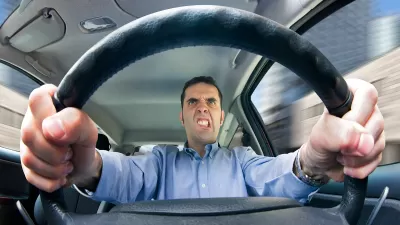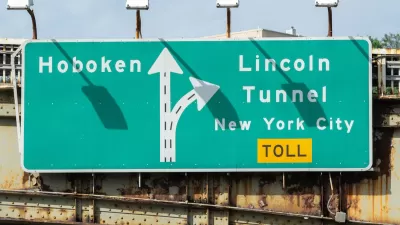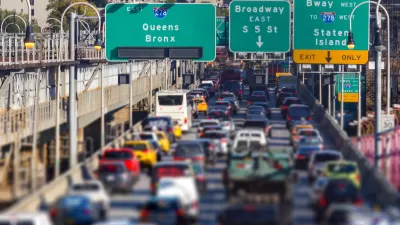Few of us are fully immune from the effects of road rage. Psychologists are asking why driving can provoke changes in behavior—and how to avert them.

Rick Paulas examines the psychology of road rage, delving into why we sometimes behave very differently as drivers and pedestrians. Paulas' observations take direction from the work of Leon James, a psychologist and researcher into driving behavior at the University of Hawaii.
Paulas writes that in modern society, driving an automobile is the most dangerous physical act many of us regularly undertake. From the article: "On the other side of that coin is the sense of safety you have inside of a car. 'It's not like waiting in the bank line, we're not exposed in the same way,' James says. You feel that you're in a protective bubble, that you're Ripley in the Power Loader at the end of Aliens. Despite all your rage, that cage of yours is keeping the other rats out. That allows us the confidence to act out a little more when confronted with annoying behaviors."
As in most other conflicts, mutual escalation is what make road rage dangerous. "It's no accident James uses the word 'duel' when discussing road rage. Duels are, by nature, the result of two people escalating, neither backing down. The first smacks the white glove and demands 'satisfaction,' and the second says, 'yeah, here it is.' While one may be the instigator, the second is perhaps more instrumental in the end result."
FULL STORY: Why We Rage on the Roads—and How to Stop

Alabama: Trump Terminates Settlements for Black Communities Harmed By Raw Sewage
Trump deemed the landmark civil rights agreement “illegal DEI and environmental justice policy.”

Planetizen Federal Action Tracker
A weekly monitor of how Trump’s orders and actions are impacting planners and planning in America.

Why Should We Subsidize Public Transportation?
Many public transit agencies face financial stress due to rising costs, declining fare revenue, and declining subsidies. Transit advocates must provide a strong business case for increasing public transit funding.

Understanding Road Diets
An explainer from Momentum highlights the advantages of reducing vehicle lanes in favor of more bike, transit, and pedestrian infrastructure.

New California Law Regulates Warehouse Pollution
A new law tightens building and emissions regulations for large distribution warehouses to mitigate air pollution and traffic in surrounding communities.

Phoenix Announces Opening Date for Light Rail Extension
The South Central extension will connect South Phoenix to downtown and other major hubs starting on June 7.
Urban Design for Planners 1: Software Tools
This six-course series explores essential urban design concepts using open source software and equips planners with the tools they need to participate fully in the urban design process.
Planning for Universal Design
Learn the tools for implementing Universal Design in planning regulations.
Caltrans
Smith Gee Studio
Institute for Housing and Urban Development Studies (IHS)
City of Grandview
Harvard GSD Executive Education
Toledo-Lucas County Plan Commissions
Salt Lake City
NYU Wagner Graduate School of Public Service





























